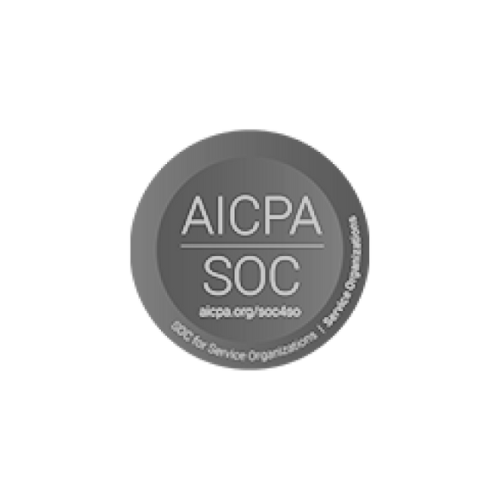Sarah had been the model employee for seven years. Promoted twice, consistently high performance reviews, trusted with sensitive client relationships. She was the person managers turned to when they needed something done right, the employee other team members looked up to, the kind of worker every organization hopes to retain.
That’s why the discovery was so shocking. During a routine audit, the finance team noticed irregularities in expense reports that led to a deeper investigation. Sarah had been systematically embezzling funds for eighteen months, using her trusted position and deep knowledge of company systems to cover her tracks. The total loss exceeded $200,000.
The background check conducted when Sarah was hired seven years earlier had been clean. No criminal history, excellent references, solid employment verification. But life had changed dramatically for Sarah in the intervening years. A messy divorce, mounting legal bills, and a gambling problem that started small and grew into a financial crisis. None of these risk factors existed when she was hired, but they had fundamentally altered her risk profile.
This case illustrates one of the most challenging aspects of employee risk management: the people you trust most may pose the greatest threats, not because they were dishonest when you hired them, but because circumstances change and people change with them.
The Myth of Static Risk
Traditional hiring practices operate on the assumption that employee risk is relatively stable over time. We conduct thorough background checks during the hiring process and then assume that information remains relevant throughout the employment relationship. This assumption was always somewhat questionable, but it’s become completely obsolete in today’s dynamic work environment.
Employee risk profiles evolve constantly based on changing personal circumstances, financial pressures, family situations, health issues, and life events that can’t be predicted or prevented. The employee who was financially stable and emotionally grounded when hired might face a crisis that fundamentally alters their relationship with work, money, and professional ethics.
The challenge is that these changes often occur gradually and invisibly. Unlike the obvious red flags that might appear during initial hiring, evolving risk factors typically develop over months or years without creating obvious warning signs. By the time problems become apparent, significant damage may have already occurred.
Moreover, the employees who pose the greatest ongoing risk are often those who have earned the most trust and autonomy. Long-term employees with excellent track records and deep institutional knowledge have access to systems, information, and relationships that could be exploited if their circumstances or motivations change. Their trusted status makes their potential misconduct both more damaging and harder to detect.
Understanding How Risk Evolves
Personal financial stress represents one of the most common drivers of evolving employee risk. Divorce, medical bills, family emergencies, or poor investment decisions can create financial pressures that didn’t exist when someone was hired. Employees facing financial crises may be tempted to exploit their position in ways they would never have considered under normal circumstances.
The challenge with financial stress is that it often develops gradually and may not be visible to supervisors or colleagues. An employee might maintain excellent work performance while struggling with mounting debt or family financial obligations. By the time financial stress becomes severe enough to motivate misconduct, the employee may have already identified and planned ways to exploit their position.
Substance abuse issues can develop or worsen over time, affecting judgment, reliability, and ethical decision-making. An employee who had no substance abuse history when hired might develop problems due to stress, injury, or other life circumstances. These issues can impair their ability to handle sensitive information, maintain professional boundaries, or make sound decisions.
Family and relationship problems can create emotional stress that affects work performance and professional judgment. Custody disputes, domestic violence situations, or caring for aging parents can create pressures that influence an employee’s behavior and decision-making in ways that weren’t predictable when they were hired.
Health issues, both physical and mental, can significantly impact an employee’s risk profile. Chronic pain, depression, anxiety, or other health conditions can affect judgment, increase susceptibility to substance abuse, or create financial pressures that didn’t exist previously.
Career disappointment or frustration can also drive changes in employee risk profiles. An employee who was initially enthusiastic and committed might become disengaged or resentful if they feel their career progress has stagnated or if they believe they’ve been treated unfairly. This disengagement can manifest as reduced productivity, policy violations, or more serious misconduct.
The Trust Paradox
The employees who pose the greatest ongoing risk are often those who have earned the highest levels of trust and autonomy within the organization. This creates a paradox where the people you’re least likely to monitor are the ones who might need monitoring most.
Long-term employees typically have access to systems, information, and relationships that newer employees don’t. They understand organizational processes, know where vulnerabilities exist, and have established patterns of behavior that make unusual activity less likely to be noticed. If their circumstances or motivations change, they’re uniquely positioned to exploit their knowledge and access.
High-performing employees often receive less oversight and scrutiny than their struggling colleagues. Managers naturally focus their attention on employees who are having performance problems, while assuming that top performers can be trusted to work independently. This reduced oversight creates opportunities for misconduct that might be detected more quickly in employees who receive closer supervision.
Trusted employees also have more opportunities to rationalize misconduct when it occurs. They might convince themselves that they’ve earned the right to bend rules, that their contributions justify special treatment, or that temporary rule-breaking is acceptable given their overall value to the organization. These rationalizations can make it easier for otherwise ethical employees to cross lines they wouldn’t have considered crossing earlier in their careers.
The challenge for organizations is maintaining appropriate oversight and verification for trusted employees without undermining the trust and autonomy that make them valuable. The goal isn’t to treat long-term employees as suspects, but to recognize that their risk profiles can change over time and that some level of ongoing verification is appropriate for everyone.
Professional and Regulatory Changes
Beyond personal circumstances, employees face ongoing changes in professional requirements and regulatory standards that can affect their compliance status and risk profile. Professional licenses can expire, certifications can lapse, and regulatory requirements can change in ways that affect an employee’s ability to perform their job legally and effectively.
Healthcare workers must maintain current licenses, complete continuing education requirements, and comply with evolving regulatory standards. An employee who was fully compliant when hired might gradually fall behind on these requirements, creating liability for both the individual and the organization.
Financial services employees face ongoing regulatory requirements related to licensing, training, and conduct standards. Changes in personal financial circumstances, legal issues, or regulatory violations can affect their ability to maintain required registrations and certifications.
Professional certifications in many fields require ongoing maintenance through continuing education, periodic re-examination, or other activities. Employees who fail to maintain these certifications might continue working in roles that require them, creating compliance and liability issues.
The challenge is that these professional and regulatory changes often occur gradually and may not be immediately apparent to supervisors or HR staff. An employee might continue performing their job effectively even after their license has expired or their certification has lapsed, making the compliance violation difficult to detect without systematic monitoring.
Building Effective Ongoing Verification Programs
Effective ongoing verification requires systematic approaches that can detect changes in employee circumstances and compliance status without creating oppressive monitoring environments. The goal is to maintain appropriate oversight while preserving the trust and autonomy that make employees productive and engaged.
Risk-based verification programs focus ongoing monitoring efforts on employees who have access to sensitive information, financial systems, or other high-risk areas. These employees might undergo more frequent re-screening, enhanced monitoring, or additional disclosure requirements based on their role and access levels.
Periodic re-screening programs conduct updated background checks, license verifications, and other verification activities at regular intervals. The frequency of re-screening might vary based on role requirements, regulatory standards, or organizational risk tolerance. Some organizations conduct annual re-screening for all employees, while others focus on specific roles or risk categories.
Continuous monitoring systems use technology to track changes in employee status, professional licenses, criminal records, and other relevant information in real-time. These systems can provide alerts when significant changes occur, allowing organizations to address potential issues proactively rather than waiting for periodic re-screening cycles.
Disclosure-based programs require employees to report changes in their circumstances that might affect their job performance or compliance status. This might include financial difficulties, legal issues, health problems, or other situations that could create risk factors. The effectiveness of these programs depends on creating environments where employees feel safe reporting problems and confident that the organization will respond appropriately.
Technology Solutions for Ongoing Monitoring
Modern technology offers numerous tools for enhancing ongoing employee verification while minimizing administrative burden and maintaining employee privacy. Automated monitoring systems can track changes in professional licenses, criminal records, and other relevant databases without requiring manual intervention for routine updates.
Continuous background monitoring services can provide real-time alerts when employees are arrested, convicted of crimes, or experience other events that might affect their risk profile. These services can be particularly valuable for organizations with large numbers of employees or those operating in high-risk industries.
License monitoring systems can track professional licenses, certifications, and registrations across multiple states and professions, providing automated alerts for upcoming expirations, disciplinary actions, or other status changes. These systems can significantly reduce the administrative burden of maintaining compliance with professional licensing requirements.
Credit monitoring services can provide insights into employees’ financial stress levels without requiring invasive financial disclosure. Significant changes in credit scores, new bankruptcies, or other financial events can indicate developing risk factors that might warrant additional attention or support.
However, technology solutions must be implemented carefully to balance risk management needs with employee privacy rights and trust. Organizations should clearly communicate what monitoring is being conducted, why it’s necessary, and what privacy protections are in place. Transparency about monitoring practices helps maintain trust while ensuring that employees understand their obligations and the organization’s expectations.
Legal and Ethical Considerations
Ongoing employee verification raises important legal and ethical questions about privacy, discrimination, and the employment relationship. Organizations must carefully balance their legitimate business interests in risk management with employees’ rights to privacy and fair treatment.
Legal requirements for ongoing verification vary significantly by industry, role, and jurisdiction. Some industries have specific requirements for periodic re-screening or continuous monitoring, while others rely on organizational policies and best practices. Organizations should understand the legal requirements that apply to their specific situation and ensure their ongoing verification programs comply with applicable laws.
Privacy considerations are particularly important for ongoing verification programs because they involve collecting and monitoring personal information about current employees who have already been hired and integrated into the organization. Employees may have different expectations about privacy and monitoring after they’ve been hired compared to during the initial hiring process.
Discrimination concerns can arise if ongoing verification programs are applied inconsistently or if they disproportionately affect protected groups. Organizations should ensure that their ongoing verification policies are applied fairly and consistently across all employees in similar roles and risk categories.
The employment relationship itself can be affected by ongoing verification programs. Employees who feel they’re being monitored excessively or unfairly may become disengaged, resentful, or more likely to leave the organization. The challenge is implementing appropriate verification measures without undermining the trust and engagement that make employees productive and loyal.
Creating Supportive Verification Environments
The most effective ongoing verification programs are those that employees view as supportive rather than punitive. When employees understand that verification measures are designed to protect both the organization and individual team members, they’re more likely to cooperate and comply with requirements.
Employee assistance programs can provide support for employees who are experiencing personal difficulties that might affect their work performance or risk profile. Rather than simply monitoring for problems, organizations can offer resources and assistance to help employees address challenges before they become serious issues.
Clear communication about verification policies and procedures helps employees understand what’s expected of them and why certain measures are necessary. Regular training and updates can ensure that employees remain aware of their obligations and the resources available to help them meet those obligations.
Confidential reporting mechanisms allow employees to seek help or report concerns without fear of immediate disciplinary action. When employees feel safe discussing problems or challenges, organizations can often address issues before they become serious violations or misconduct.
Recognition and support for employees who maintain high standards and comply with verification requirements can reinforce positive behaviors and demonstrate that the organization values integrity and compliance. Positive reinforcement is often more effective than punitive measures for maintaining desired behaviors.
Measuring Program Effectiveness
Effective ongoing verification programs require regular assessment and improvement based on outcomes and feedback. Organizations should track metrics that indicate whether their programs are achieving their intended goals while maintaining employee satisfaction and engagement.
Detection rates for various types of issues can indicate whether verification programs are identifying problems that might otherwise go unnoticed. However, organizations should be careful not to create incentives for finding problems where none exist or for treating normal life events as risk factors.
Employee feedback about verification programs can provide valuable insights into how these programs affect morale, trust, and engagement. Regular surveys or focus groups can help organizations understand employee perspectives and identify opportunities for improvement.
Compliance outcomes, such as regulatory violations, audit findings, or legal issues, can indicate whether ongoing verification programs are effectively managing organizational risks. However, these outcomes should be evaluated in the context of overall organizational performance and industry benchmarks.
Cost-effectiveness analysis can help organizations understand whether their ongoing verification investments are providing appropriate returns in terms of risk reduction and problem prevention. This analysis should consider both direct costs and indirect benefits such as improved employee behavior and reduced liability exposure.
The Future of Ongoing Verification
Ongoing employee verification will likely become more sophisticated and widespread as organizations recognize the limitations of point-in-time hiring verification and the importance of managing evolving risks. Technology advances will make continuous monitoring more feasible and cost-effective, while regulatory requirements may expand to require ongoing verification in more industries and roles.
The challenge for organizations will be implementing ongoing verification programs that effectively manage risks while maintaining positive employment relationships and organizational cultures. The most successful programs will be those that employees view as fair, necessary, and supportive rather than intrusive or punitive.
Organizations that invest in developing effective ongoing verification capabilities now will be better positioned to manage evolving employee risks while maintaining the trust and engagement that make their workforce productive and loyal. The goal isn’t to eliminate all risk—that’s neither possible nor desirable—but to manage risk appropriately while supporting employee success and organizational objectives.
The question isn’t whether employee risk profiles change over time—they do. The question is whether your organization will develop the capabilities necessary to detect and respond to these changes appropriately, or whether you’ll continue to rely on outdated assumptions about static risk that leave you vulnerable to problems you could have prevented.
The time to address ongoing employee verification is now, before changing circumstances create problems that could have been detected and addressed earlier. Your most trusted employees deserve verification systems that support their success while protecting the organization they’ve helped build.
About the Author: Sachin Aggarwal is a thought leader in background verification and HR compliance. He helps organizations develop ongoing verification systems that balance risk management with employee trust and engagement.
Ready to implement ongoing verification? Contact AMS Inform for guidance on developing verification programs that protect your organization while supporting long-term employee relationships and organizational success.
















